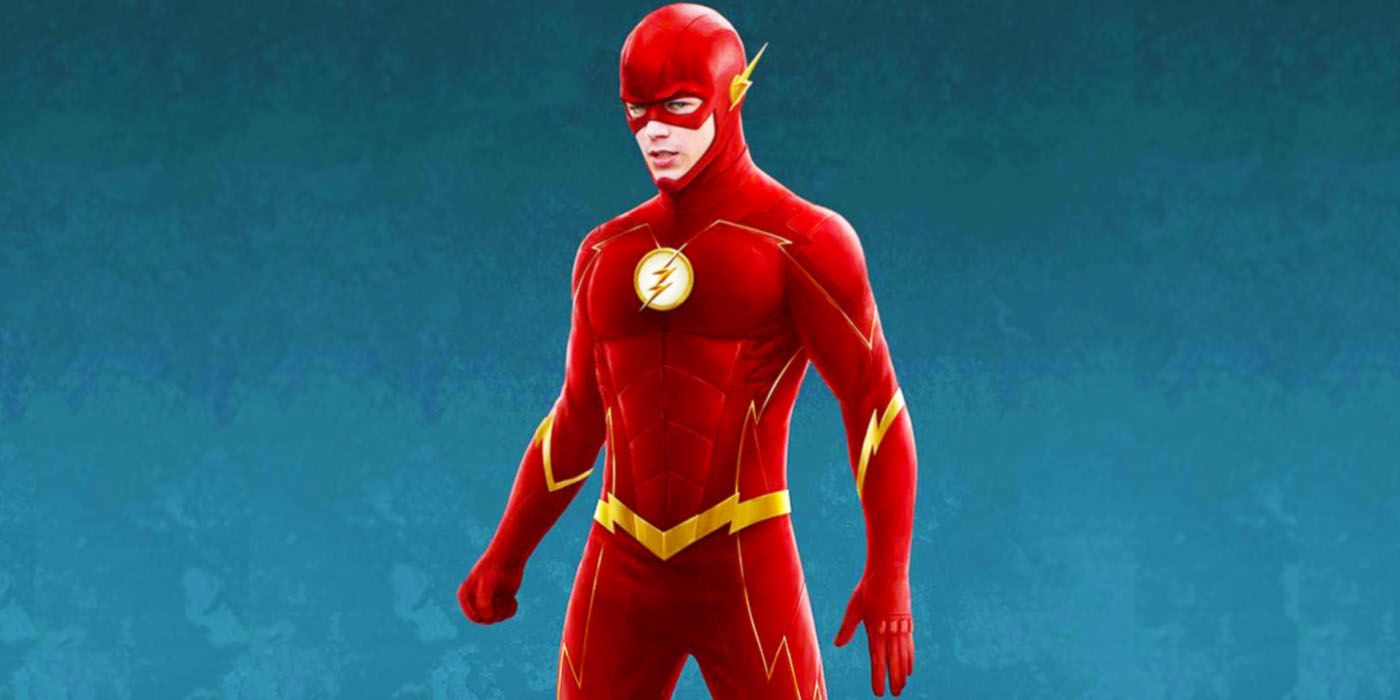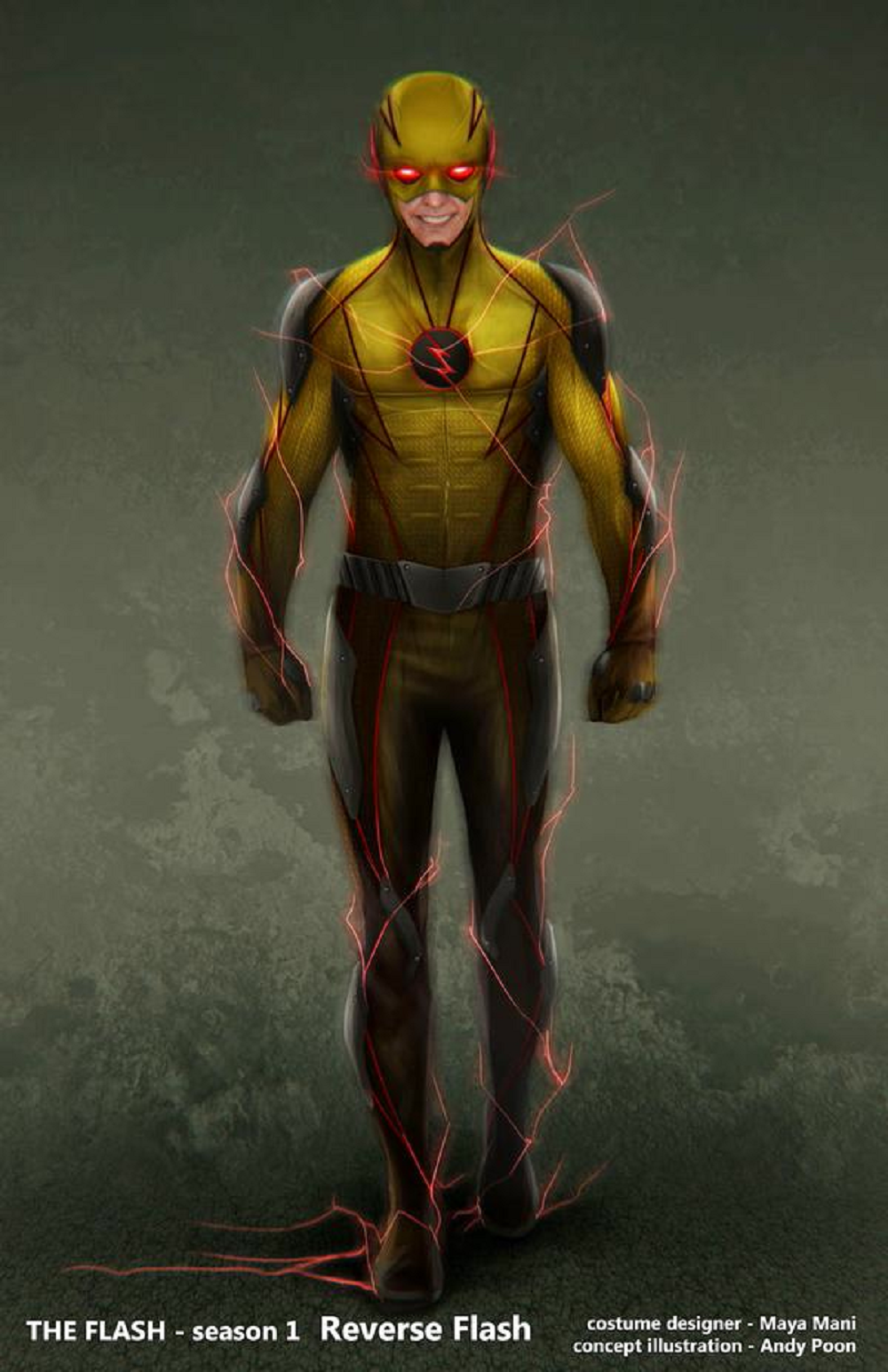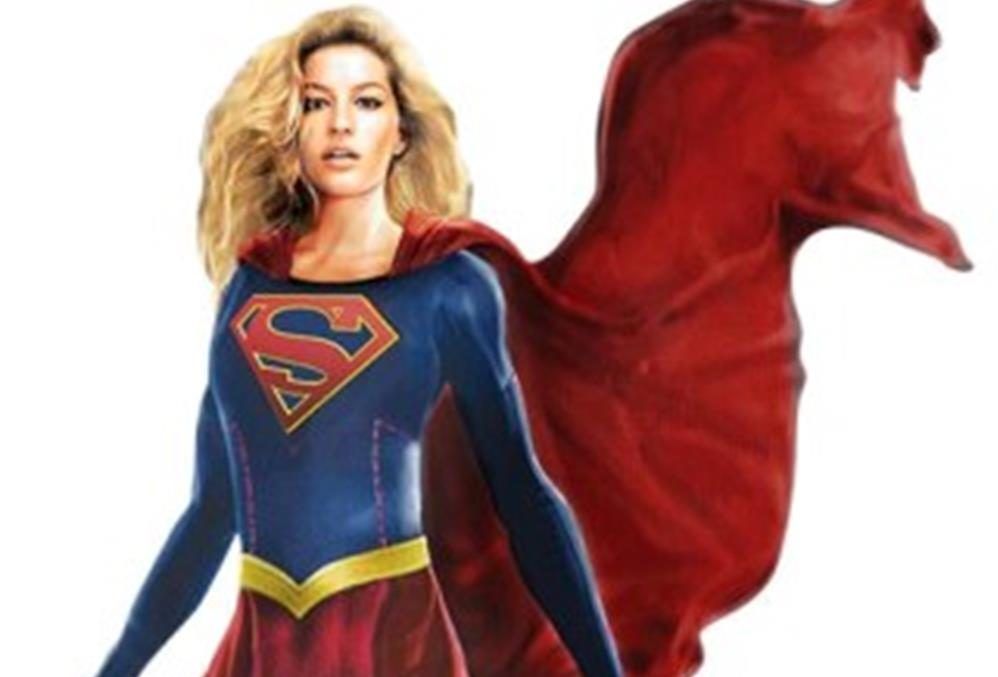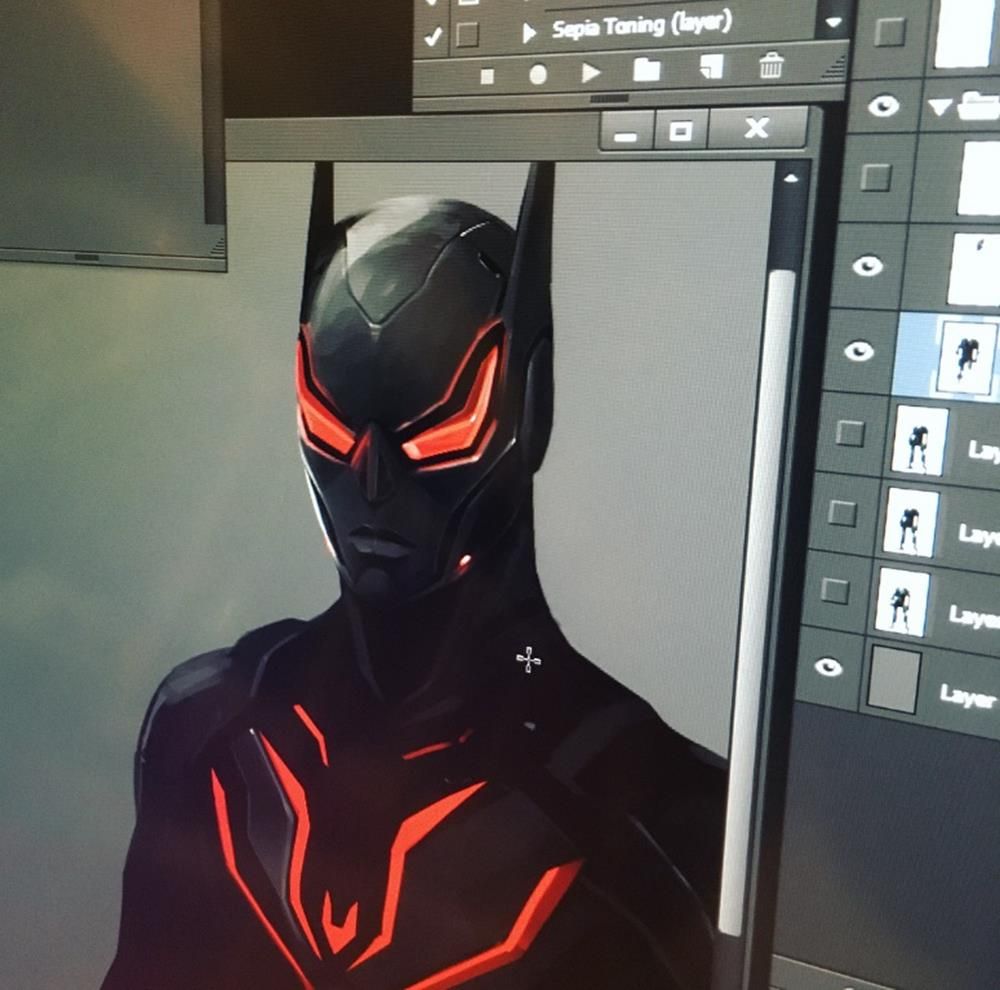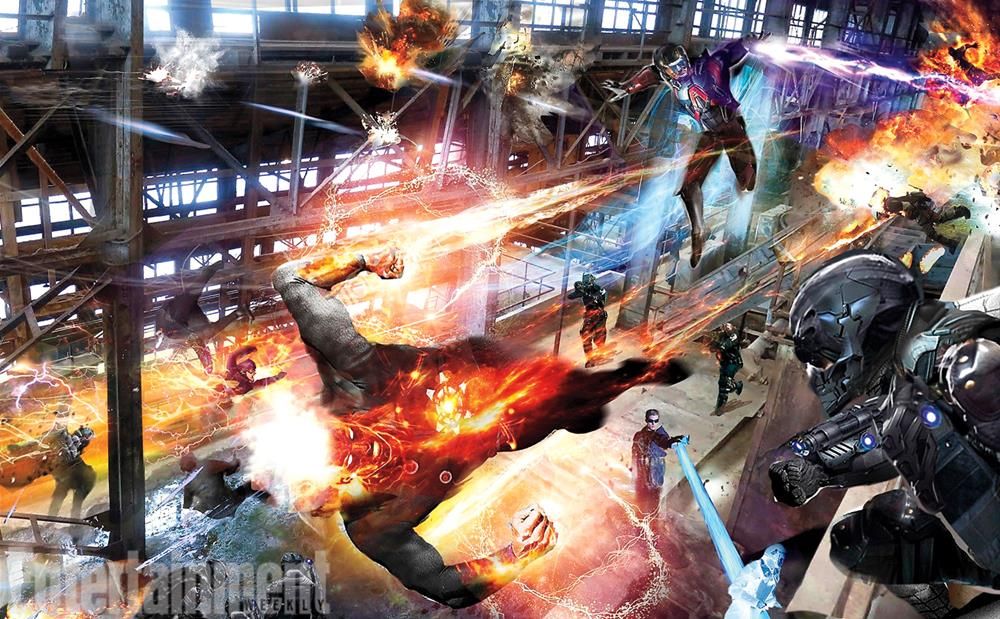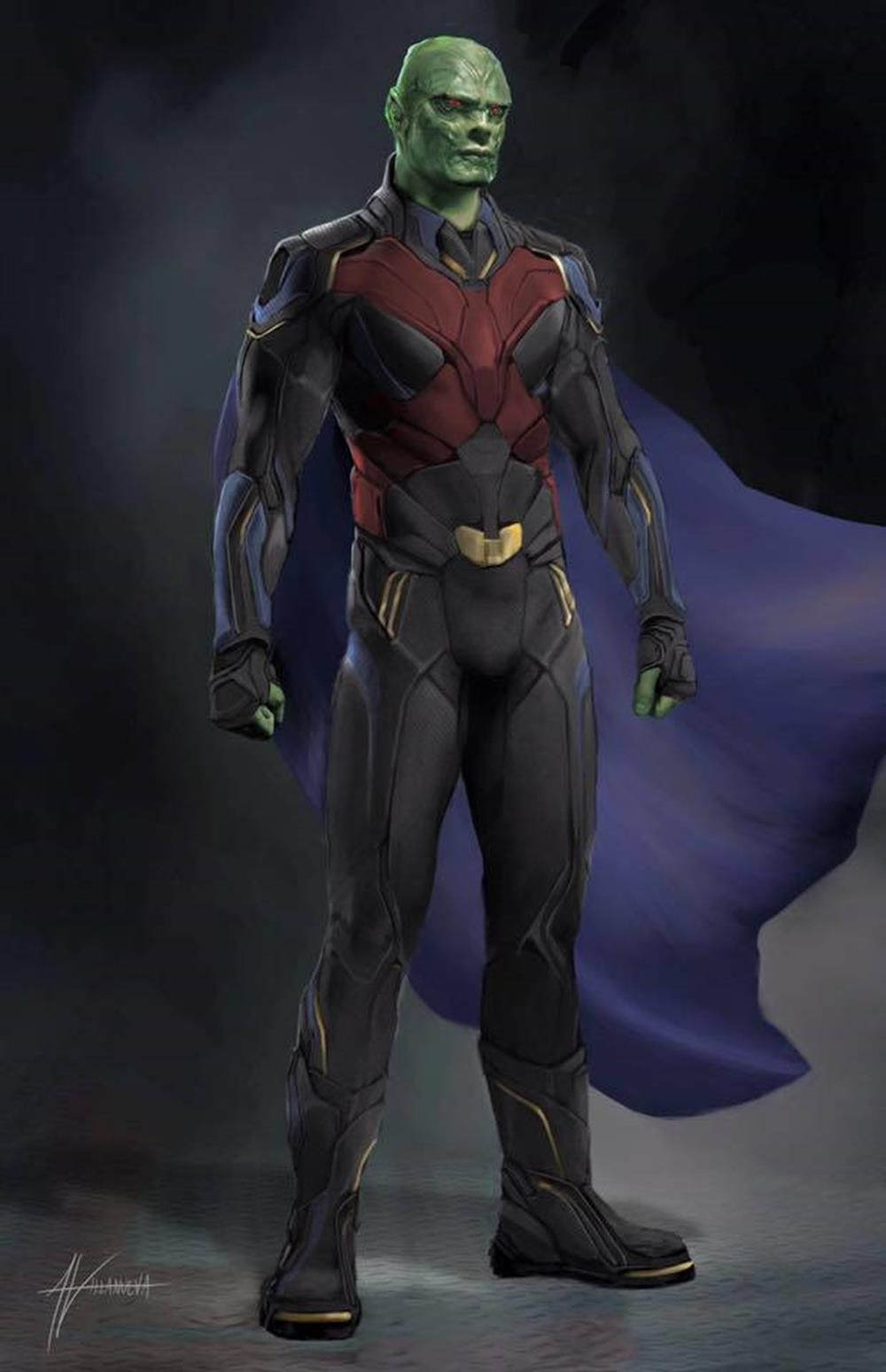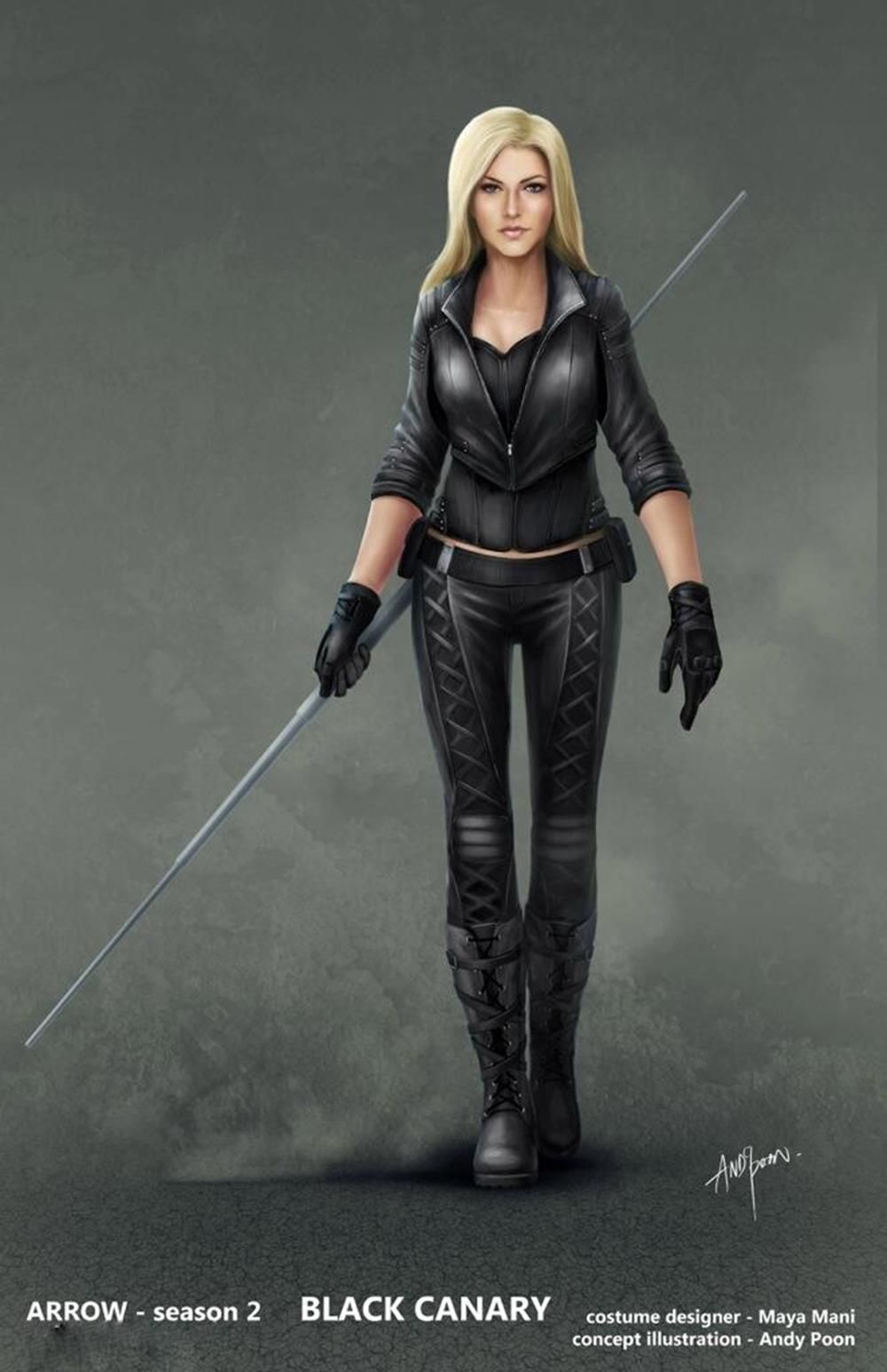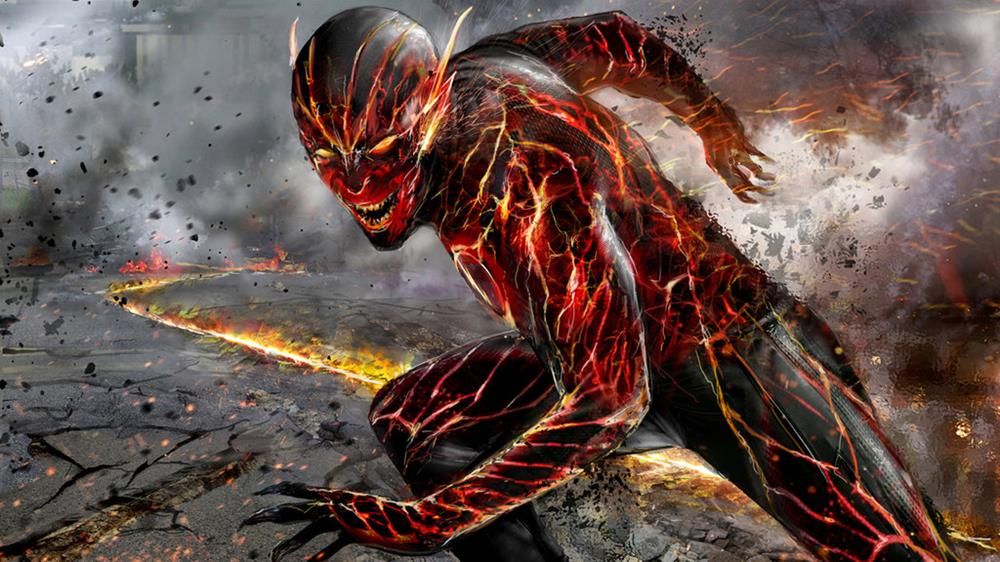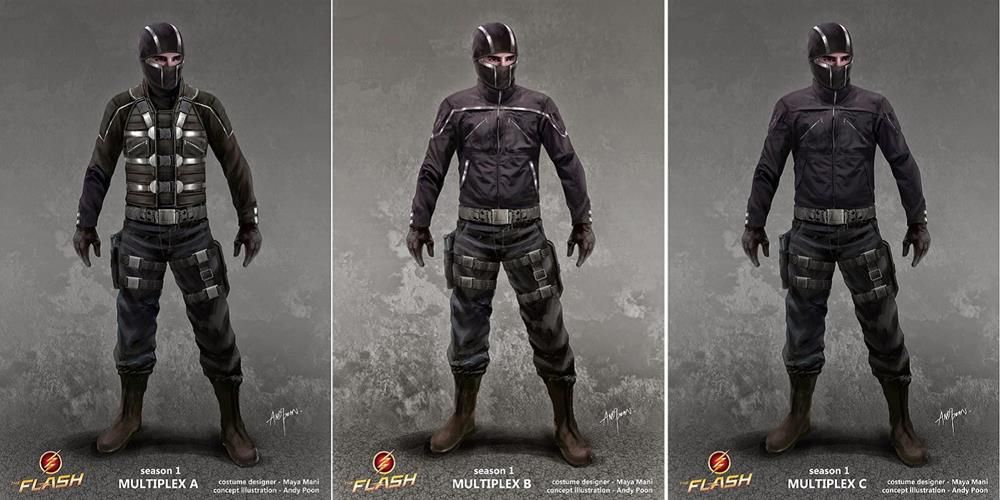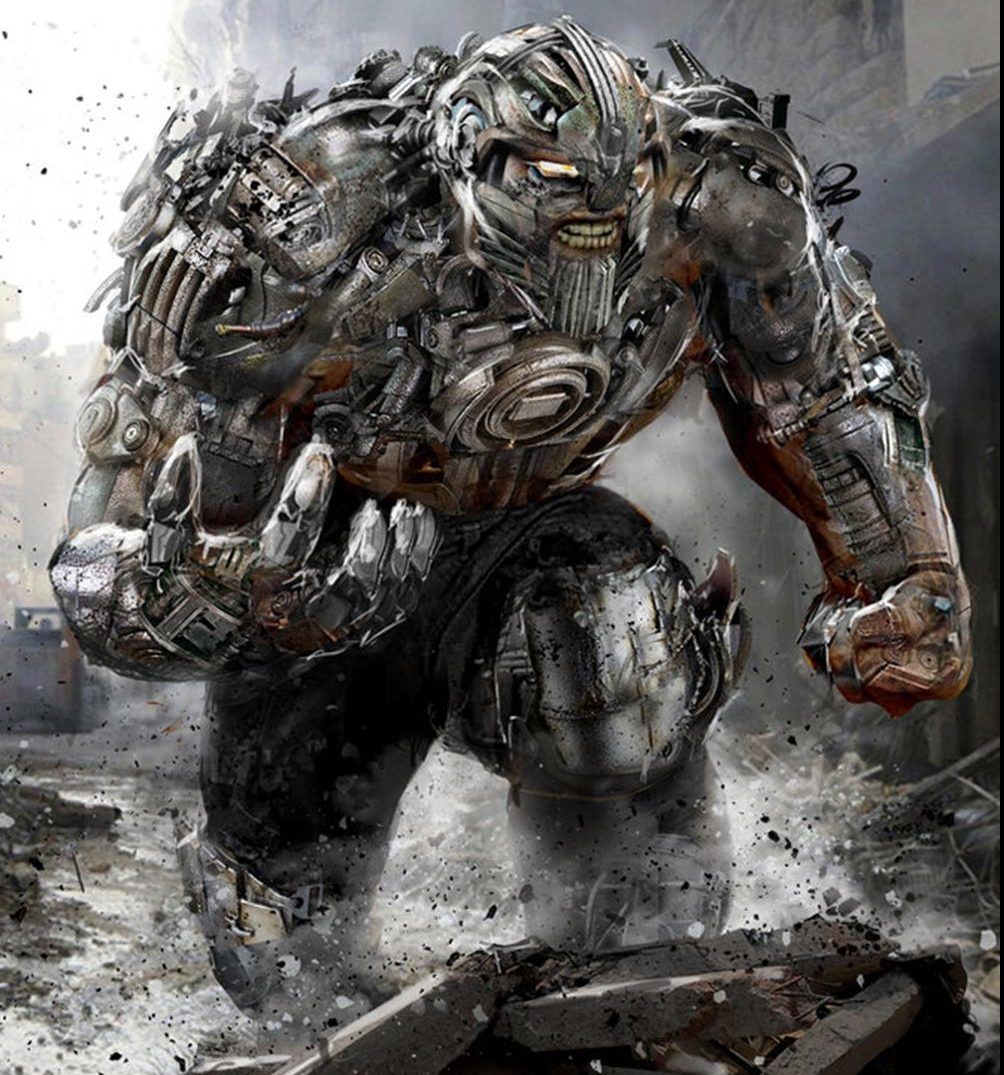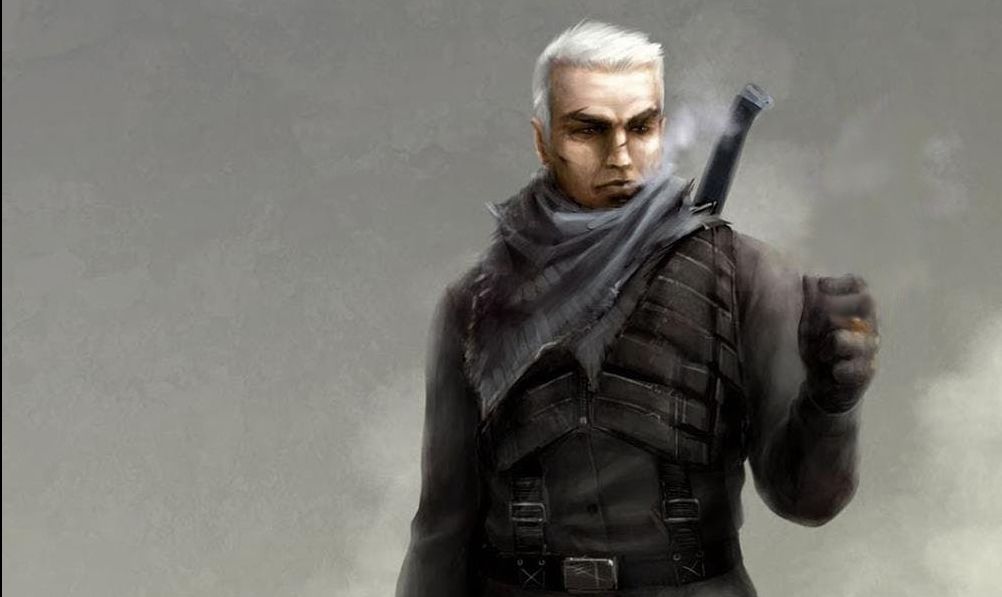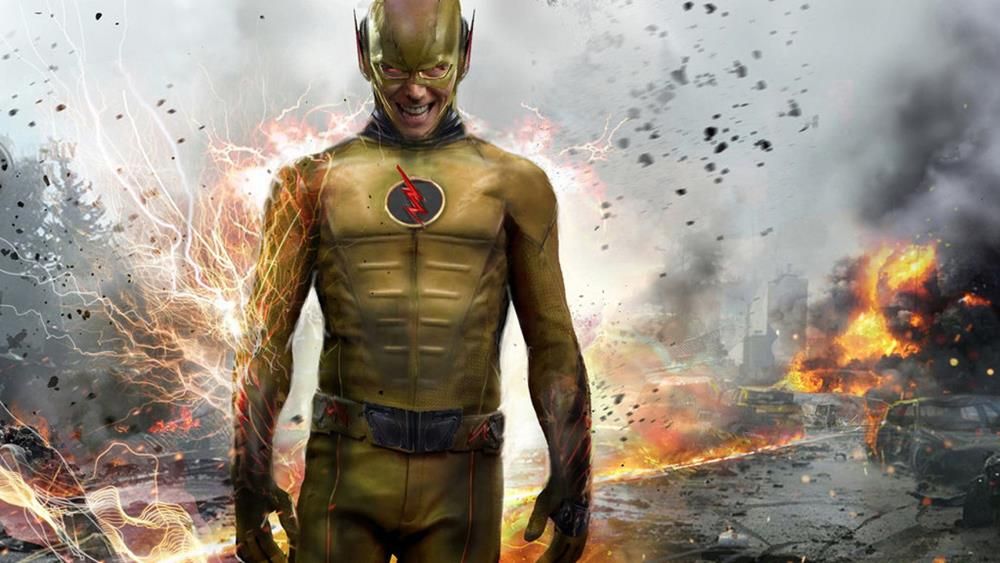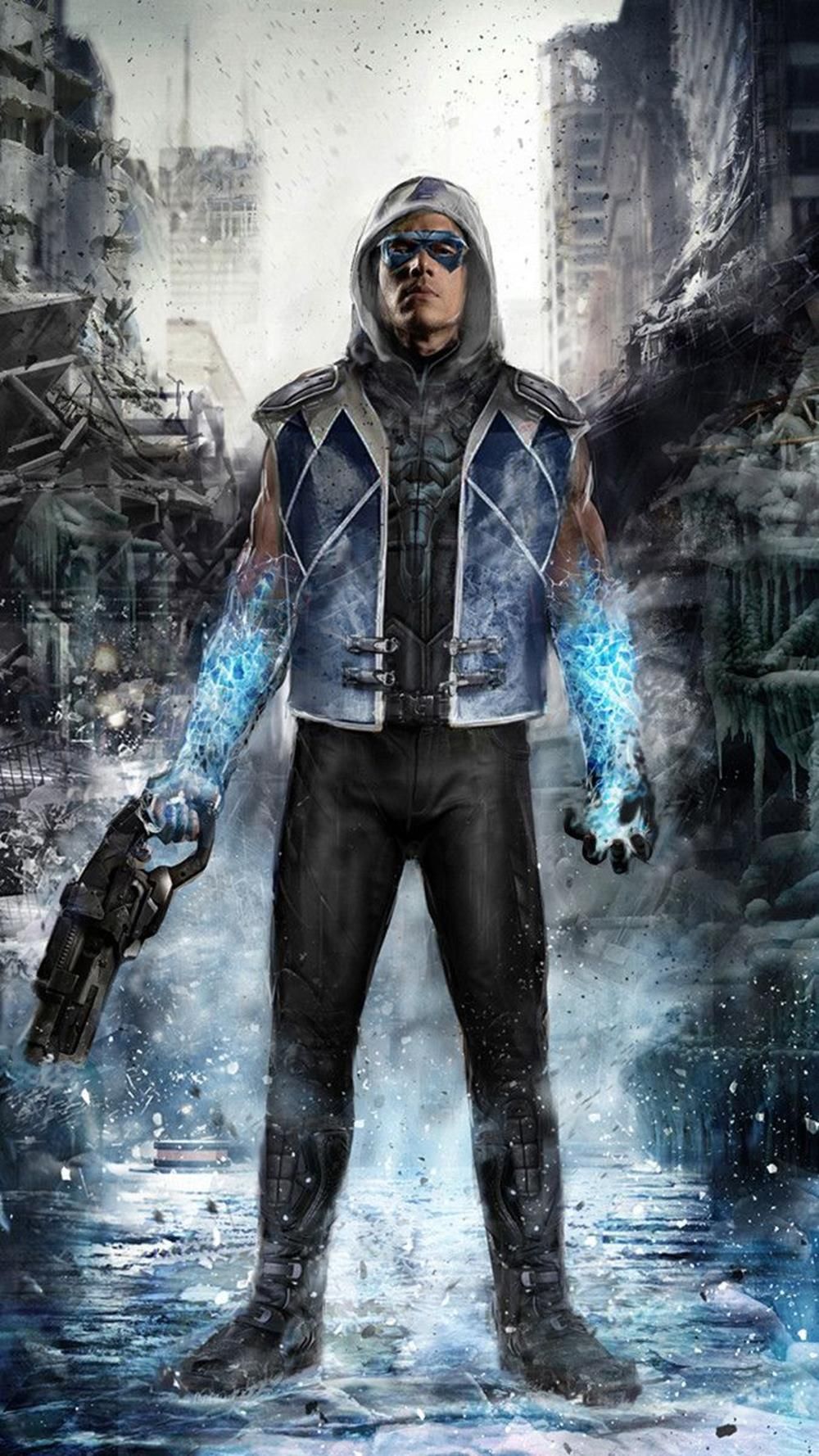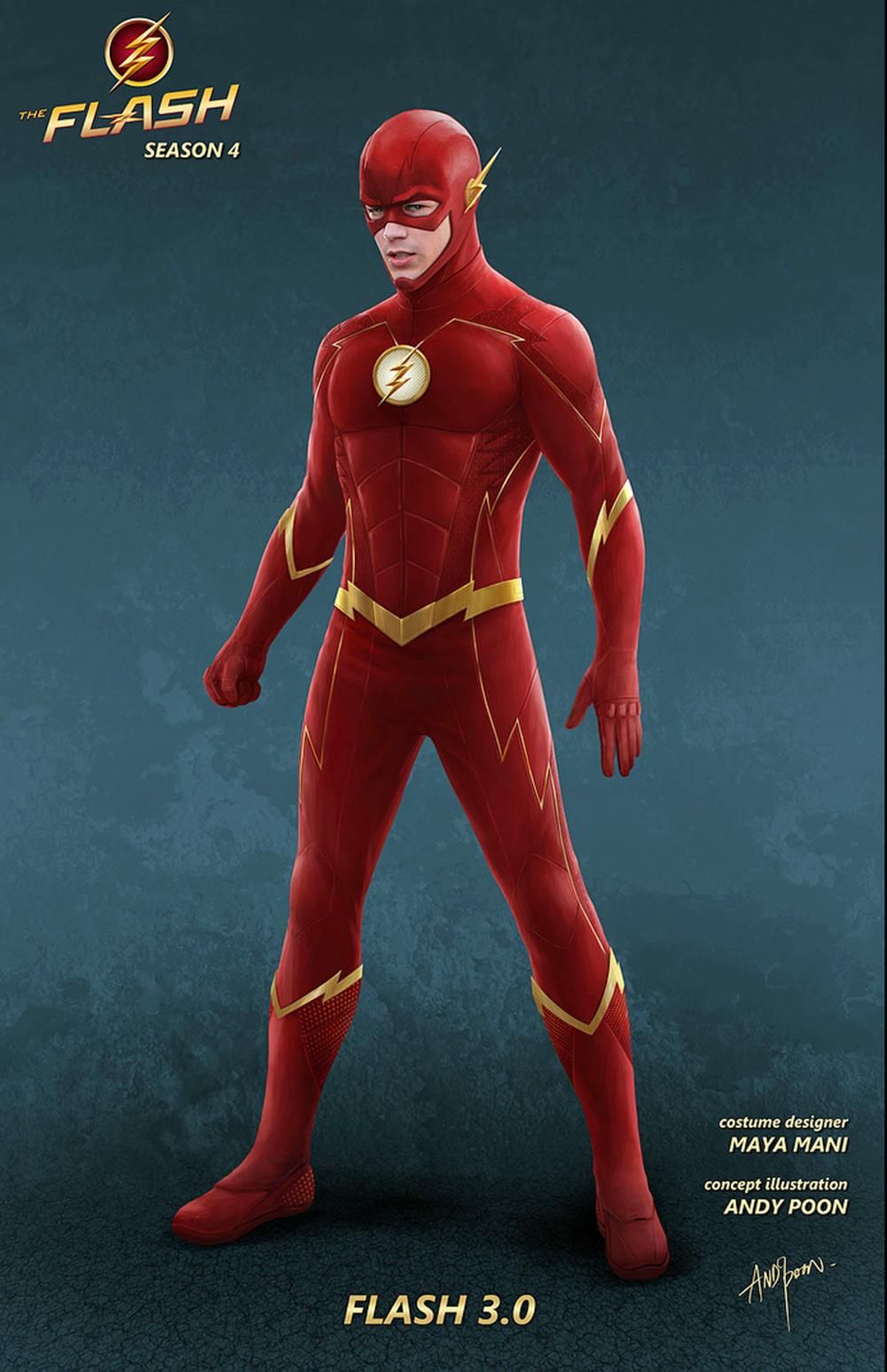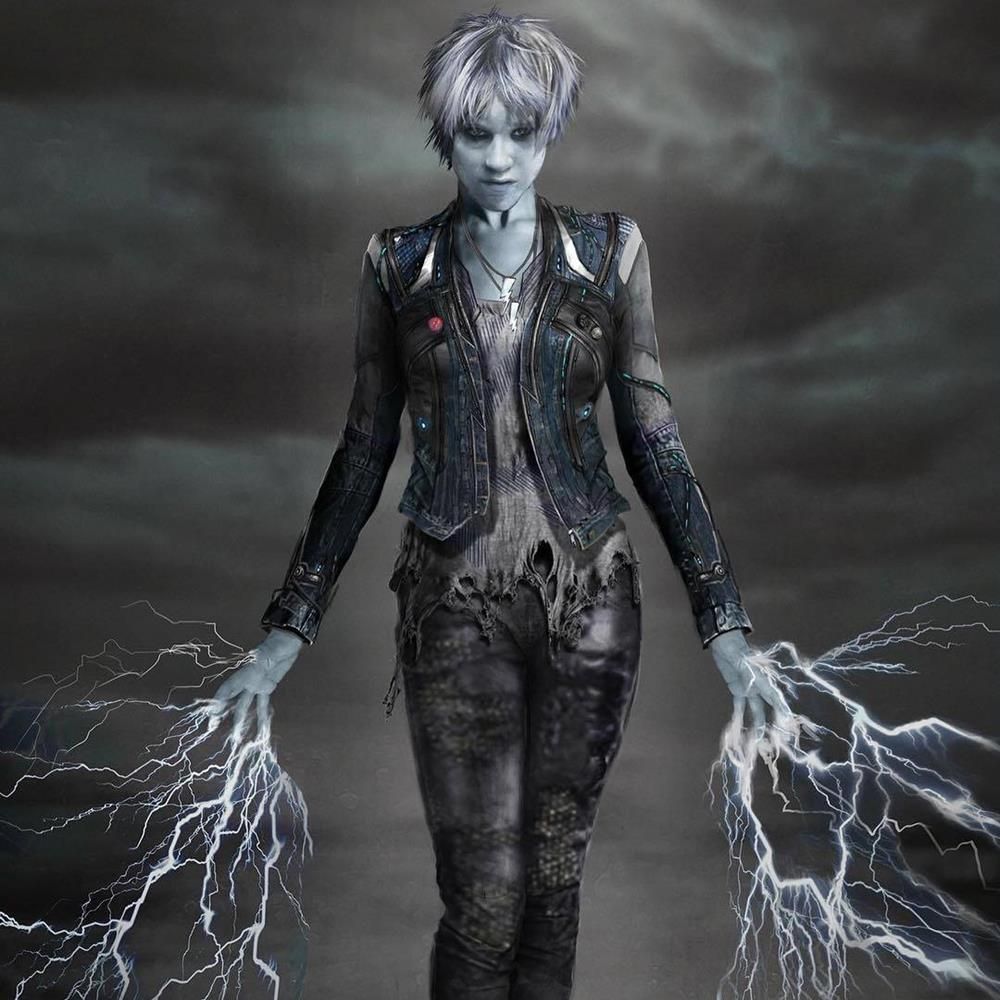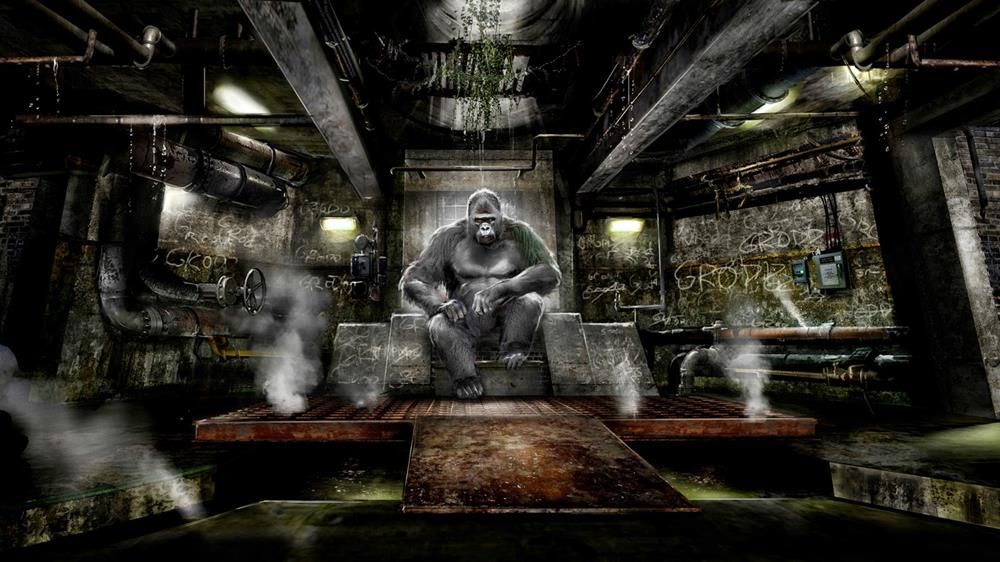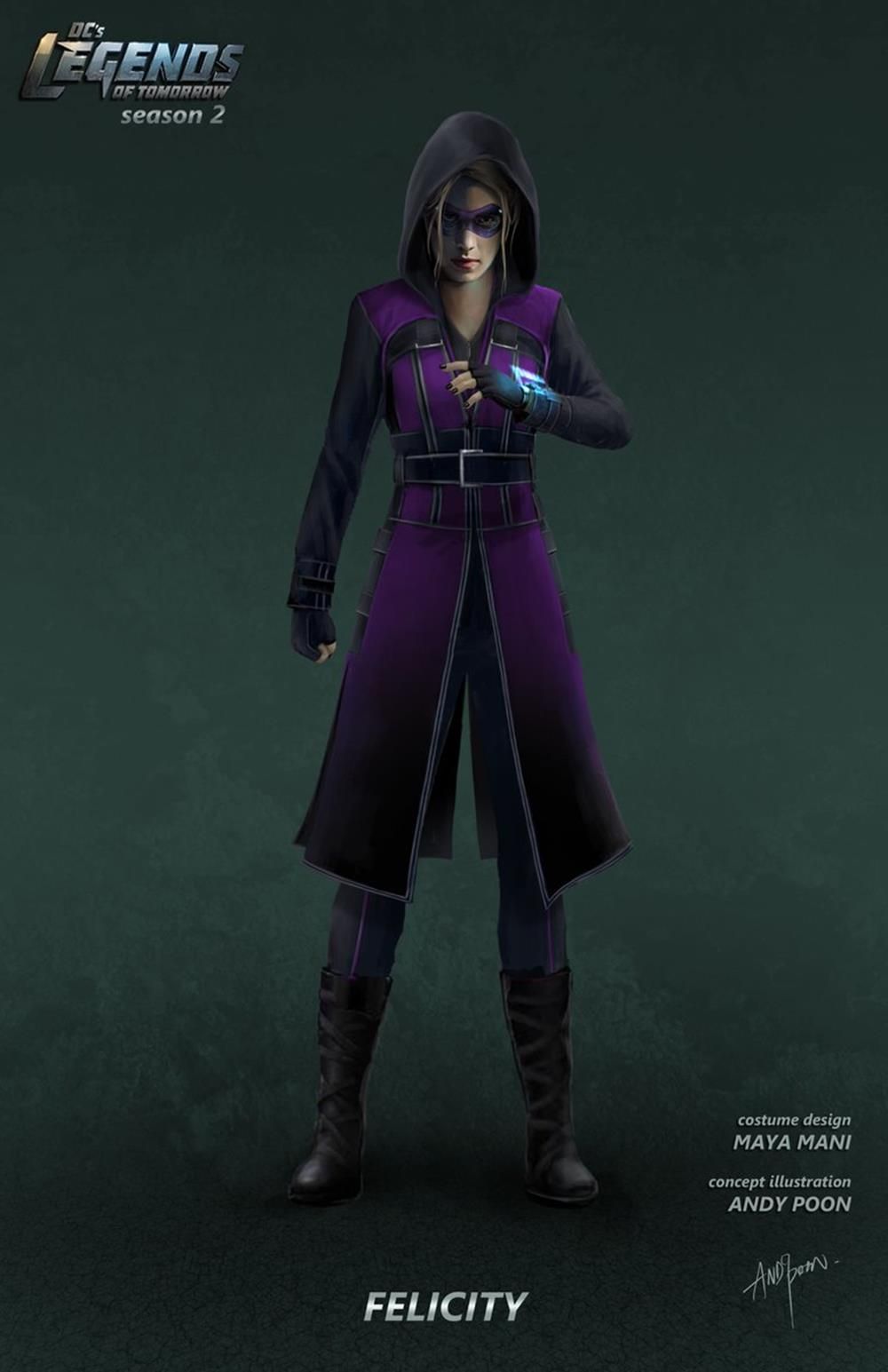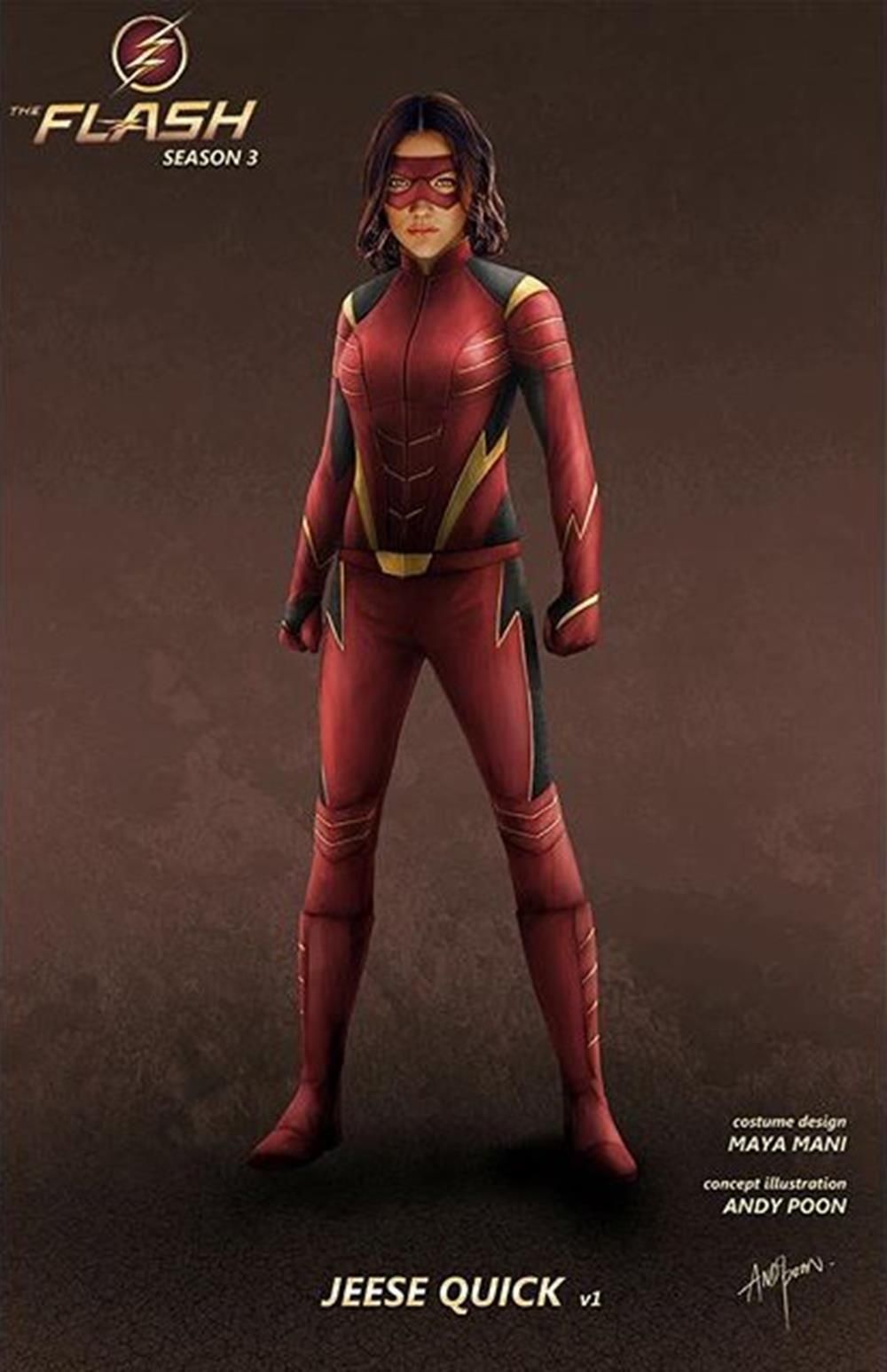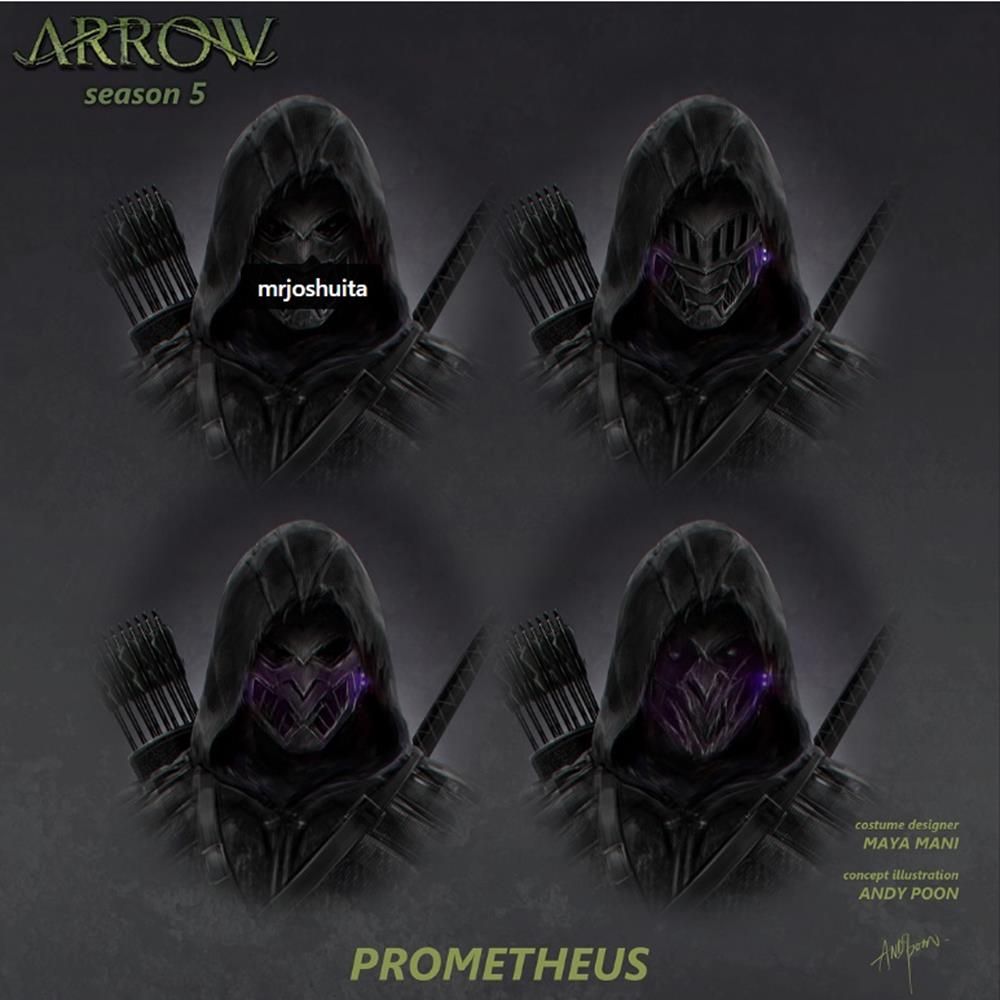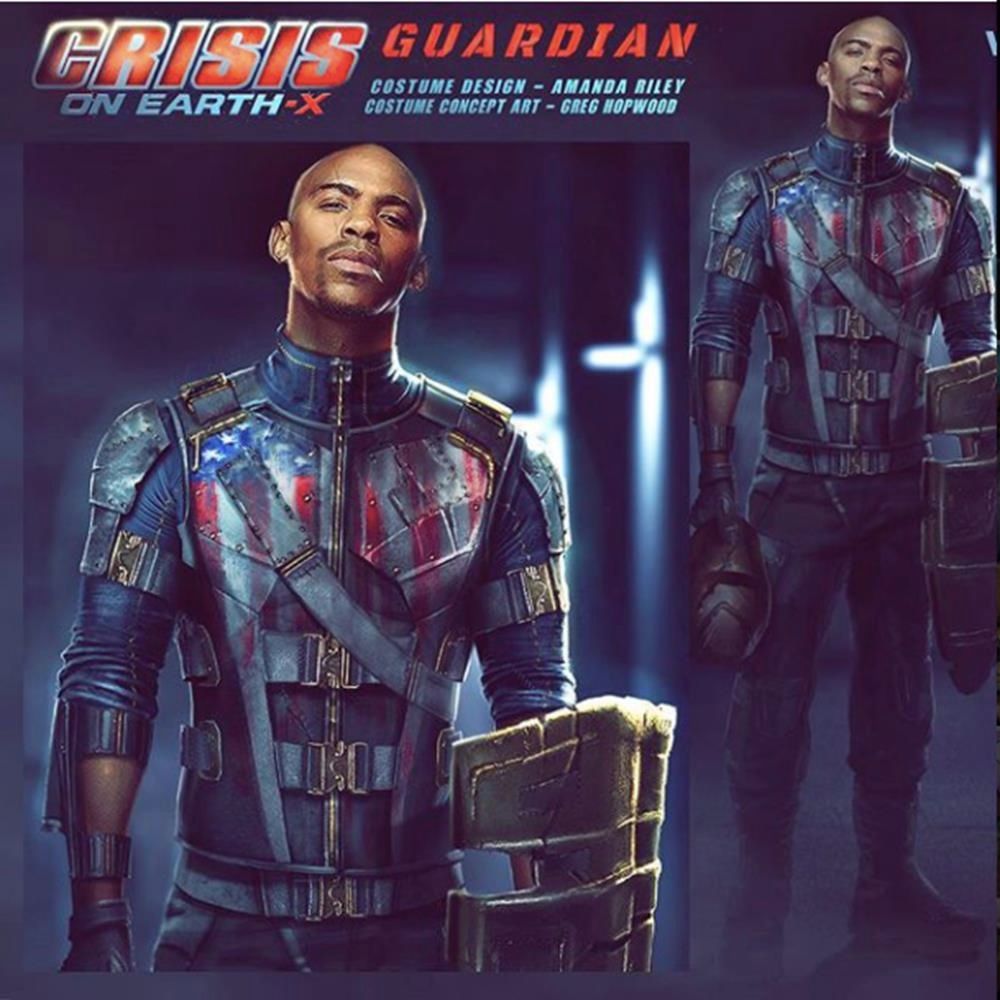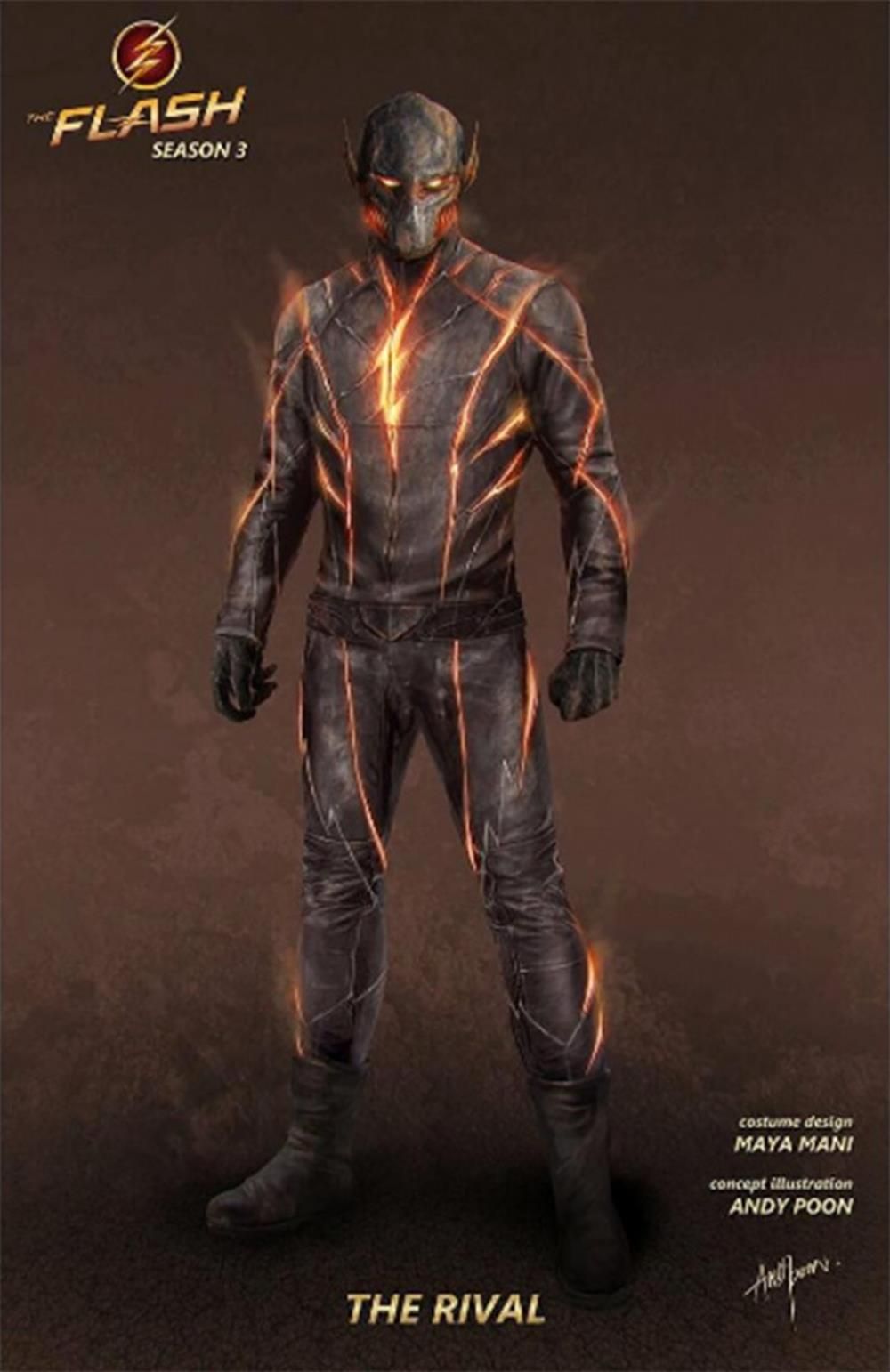In the world of superhero television series, one of the most important stages in the production of the shows is in the concept art stage. This is the time that the wonderful artists working for Arrow, Flash, DC's Legends of Tomorrow and Supergirl actually design the costumes that the actors on the show will wear. This is so important because this is the point where the wild ideas of the writers actually become realities.
However, concept art still is, by its very definition, just a concept and not a reality. Therefore, while the Arrowverse concept artists have been tremendous in actually getting their vision translated to the actual screen, there are going to be times when their designs do not make it into the show. Sometimes, the changes are just slight ones, while other times it is more notable. Money often plays a role, as a design is determined to be too cost-prohibitive to use on the show. Sometimes the changes are notable enough that they really would have changed the direction of the shows had they made it onto the air. We will take a look at 20 examples of these unused Arrowverse concept art drawings that would have changed everything.
20 REVERSE FLASH (EOBARD THAWNE)
When it comes to designing superhero costumes for television and film, there is a major question that has to be asked of all production designers -- how dark do we want to get? When superhero movies were still a relative rarity, the first X-Men film in 2000 said, in effect, "Remove all possible color!" The X-Men went from the comic book outfits that were filled with colors to the plain black leather outfits of the film. The film even poked fun of the comic book costumes, famously riffing on Wolverine's yellow spandex.
Of course, one of the Flash's biggest villains wore a costume that was precisely that! Eobard Thawne, the Reverse Flash, wore an almost all-yellow costume. Therefore, when Maya Mani and Andy Poon debated the design of the Reverse Flash's costume on Season 1 of the Flash, they initially tried to overload the yellow with lots of extra design elements to tamper it down. Had they gone with that design, it would have likely informed all of their design work going forward on the show.
19 SUPERGIRL
Famously, the costumes for the first three major solo heroes of the Arrowverse, namely Green Arrow, Flash and Supergirl, were all designed by 12-time Academy Award-nominated (and four-time Academy Award-winning) costume designer, Colleen Atwood. Atwood did a wonderful job with Arrow and Flash, but she probably got the most attention for her work on Melissa Benoist's Supergirl costume. Atwood put so much attention into the design that she specifically had Benoist lay on a bench during a fitting so that Atwood could see what it would look like in flight.
Interestingly, though, Atwood specifically noted about Supergirl's bare legs, "I feel like there’s a real love for Americana with Supergirl, and I wanted to really embrace that heart of women — there’s enough skin out there in the world, it’s not for everybody and Melissa was just the right person to pull it off." While that is a fine sentiment, the initial design for Supergirl by Atwood seemingly does show a decent amount of Supergirl's bare legs. In the final costume, that is all covered in shaded tights. The reaction to the costume would have certainly been a lot different had Supergirl's legs not been covered in the final costume.
18 BATMAN BEYOND
Generally speaking, when you see concept art of a character, that means that that character is set to appear on a television series or a film. That is why that the internet went nuts in March of 2018 when Andy Poon, the acclaimed concept artist on a number of Arrowverse series, revealed on his Instagram account a concept art drawing of Terry McGinnis, the Batman of the future that starred in the animated series, Batman Beyond. Was this a sign that the future Batman was going to show up in the Arrowverse? Perhaps as part of the time-traveling Legends of Tomorrow?
As it turned out, it was all a bit of a false alarm as this was just Poon doing some concept art for fun on his own. Still, his design work was so good that it really makes you want to see McGinnis is the Arrowverse, right? Recently, there have been some mentions in Arrowverse episodes that seem to suggest that Batman actually does exist in this universe, so maybe it is not so crazy to think that this version of Batman might actually show up. If so, that would certainly mark a major change in the Arrwoverse as a whole.
17 FIRESTORM
Outside of the issue about how colorful you want to get your costumes to look in person, probably the next biggest issue when it comes to designing costumes for film and television is the sheer cost that is involved in the production of the costume. Perhaps no regular hero in the Arrowverse made that clearer than Firestorm. You see, the entire set-up of Firestorm involved the use of heavy-duty computer graphics. Just how much computer graphics would be needed, however, were reliant on how the costume was designed.
When the CW first revealed concept art for the cast of Legends of Tomorrow in action, it showed a Firestorm who had a much more intricate costume that would have required a good deal more computer graphics to make it look good. This was before it was revealed precisely which Firestorm was going to be in the show. When the show came out, the design was different and more streamlined. However, even with the streamlined look, Firestorm was still a difficult look to reproduce on a regular basis and the show would often have to come up with explanations as to why Jefferson Jackson and Martin Stein would have to split up so that they could not form Firestorm.
16 MARTIAN MANHUNTER
Hilariously enough, Martian Manhunter only became a character on the Supergirl TV series because of a joke that the producers made about actor David Harewood's ears. Harewood had been cast as the alien-hating head of the DEO, Hank Henshaw. One of the producers noted that Harewood's ears almost looked alien and that if they ever needed to cast the Martian Manhunter, that Harewood would be perfect. Then producer Geoff Johns thought that, hey, why not just reveal that Martian Manhunter was Henshaw?
While he was excited to play such a major character, Harewood was concerned about the makeup that would be involved, noting, "Andrew gave me this model of a green Martian, and at first, I was a bit horrified. I thought, ‘I’m going to be playing Shrek for the next seven years.’ I was anxious because I could see hours of prosthetic makeup and that was simply not something I wanted to do. But then I started reading it, and I was blown away." The original design for Martian Manhunter by Alan Villanueva, though, was probably a bit too elaborate for the show's special effects department. They did a good job coming pretty darn close to Villanueva's design, though, just slightly less realistic.
15 CANARY
In the early days of the Arrowverse, it was a difficult decision as to just how much to lean into the "superhero" style designs of characters. If you recall, when Oliver Queen first returns to Starling City and starts killing people who had "failed the city" in his mind, he not only was not called the Green Arrow, he didn't even have any sort of colorful superhero name at all. He was just "The Hood." Not only that, but he literally did not wear a mask! He just covered his face with grease paint. It was not until he met Barry Allen that Oliver began to adopt a domino mask.
Similarly, then, that was a question that the producers were asking themselves about the rest of the Arrowverse. Should they deck out in masks or should they go without them? It was a question that was still in their minds when they first designed Sara Lance's debut as the Canary. Her initial concept art for her first appearance shows the character without a mask. When she showed up on the show, though, she was now rocking a domino mask herself. It would be interesting to think of how the show would look if they had gone in that direction.
14 REVERSE FLASH (DANIEL WEST)
As you will see on the rest of the list, the biggest departures from the concept art to the actual character on the show is definitely John Gallagher's designs. In the case of this Reverse Flash design art, he went so far as to try to adapt an entirely different character into the one on the series.
You see, in the "New 52" relaunch of the Flash in 2011, the Reverse Flash was actually Daniel West, the brother of Iris West! Their mother had died when they were young, which drove their father to become an abusive alcoholic. Daniel eventually grew so sick of their abuse that he decided to save his sister and himself by trying to kill his father. He pushed him down a flight of stairs, paralyzing him but not killing him. Daniel then left home and become a criminal. Later, he gained speed powers and learned that he could run fast enough to go back in time. His plan was to make Iris respect him by killing their father. The Flash stopped him. Daniel later joined the Suicide Squad and died in action. Naturally, having the Reverse Flash be someone else entirely would dramatically change the shape of the series.
13 MULTIPLEX
One of the ways that the Flash changed the Arrowverse forever is that it opened the universe up to the concept of more colorful heroes and villains. For instance, the producers of Arrow initially were reluctant to ever even have a real super-powered character on the series and even went out of their way to come up with "realistic" superpowers like the Mirakuru super soldier serum that gave Deathstroke his enhanced abilities. When the Flash was so successful, Arrow reversed course and has had a number of super powered heroes and villains since then.
However, when the Flash debuted, there was debate there, too, over how over-the-top to go with their villains. Note that the first villain on the series, Cylde Mardon, had no superhero name and no costume. The second villain on the series, Multiplex, had the ability to make duplicates of himself but the question remained whether he would wear a real super villain costume. After showing a variety of more traditional masked looks, the ultimate design was sans mask. This made it clear that, early on at least, the Flash was going to follow Arrow's footsteps and keep the villains a little more down to Earth. That quickly went out the window, but it cold have gone out the window even earlier in the series!
12 GIRDER
Again, when it comes to dramatic changes between concept art and the show itself, you are often going to find yourself with a John Gallagher piece. In the case of Girder on the Flash, the difference is like night and day. Gallagher designed the character like he looked in the comics. Girder fell into a vat of liquid metal and scrap parts, transforming into a walking metal man, decked out with the various metal bits that were in the vat when he gained his abilities.
In the TV series, though, they decided to avoid the excess metal and just have Girder become purely a metal man. That was an important decision, because it allowed Girder to be used more frequently in the series. If they had actually tried to use computer graphics to make the comic book version of Girder appear in the show, it would be a King Shark situation where they would only be able to show him for a few seconds at a time. We would have missed out on some interesting dynamics in the series like the fact that, in his previous life before gaining his powers, Girder knew both Barry and Iris from school.
11 SLADE WILSON
In some ways, concept art can be really tricky when it comes to actually being a guide towards the show itself. A perfect example of this is the depiction of Slade Wilson from the early days of Arrow. It is almost a certainty that Maya Mani and Andy Poon were working without a specific actor in mind when they came up with their design for the mercenary Wilson, who was set to team-up with Oliver Queen in the flashbacks set on the mysterious island in Season 1 of Arrow.
Thus, their design could really only be used in terms of the costume itself and not how the actor playing Slade would look. However, concept art typically at least has a rough estimate of what the actor is supposed to look like in the role and Manu Bennett's portrayal of Slade Wilson did not even come remotely close to looking like this concept art. If you stretch a bit, you can note that it looks like he probably has some of the facial scars from the drawing, but that's about it. Not only that, but the whole spirit of the character in the drawing is different from Bennet's Wilson, in that the Slade in the drawing is reserved and distant while Bennett played Slade as a bombastic type.
10 REVERSE FLASH (EOBARD THAWNE)
So we have one piece of concept art for the Reverse Flash where they seemingly tried to de-emphasize the yellow as much as they could, now let us look at a different artist's approach that took things in the completely opposite direction. John Galagher's concept art often embraces the over-the-top comic book feel of characters. In other words, he tends to try to take the character directly from the page to reality as much as he can. So when it came time for him to design a look for the Reverse Flash, he went old school and basically just used the actual costume that the Reverse Flash wears in the comics.
Of course, instead of spandex, the outfit looks like it is yellow leather, but the effect is essentially the same -- it looks like it leapt off of the comic book page. This, naturally, has the opposite effect of the previous design. While that outfit tried to de-emphasize the yellow, this one embraced it fully. That would have the possibility of coming out looking silly when seen in reality. When it comes down to it, the perfect solution would be a sort of middle ground between the Mani/Poon design and the Gallagher one and that is precisely what the show ended up doing.
9 CAPTAIN COLD
When the "New 52" relaunched all of DC's titles, it gave writers a chance to completely re-interpret the DC Universe of characters. In many cases, the characters were barely changed. Besides being de-aged along with the rest of the DCU and thus no longer married to Iris West, Barry Allen generally maintained a fairly consistent portrayal in the "New 52" as he did in the earlier continuity. However, some characters received changes that almost seemed to be just for the sake of change, like how Flash's Rogues suddenly all had their weapons integrated into their very being.
Thus, instead of having a cold gun, Captain Cold could literally just create blasts of cold himself. When John Gallagher did concept art for Captain Cold for the Flash TV series, he had Cold wearing his "New 52" costume and he is shown with cold powers, as well. Oddly enough, he also has a cold gun for some reason. Fairly quickly, Geoff Johns changed Captain Cold so that he went back to just the cold gun and to his familiar older costume design. The Flash TV series stuck with the gun idea and had him wear a close approximation of his original comic book costume on the show.
8 FLASH (ARMOR)
As noted, the big change in the Arrowverse when it comes to costume design was when Colleen Atwood gave the Flash one of the brightest costumes that the nascent Arrowverse had ever seen. What's funny about that, of course, is that it really was not all that bright of a costume. However, the fact, though, that it used a primary color like red throughout it was still a bold choice. This soon led to brighter and brighter costumes on all of the various shows of the Arrowverse.
The Flash had gone through three different versions of his costume by the end of Season 3. In Season 4, the Flash debuted a new costume that was designed by Cisco in case Barry Allen made it out of the Speed Force prison he was trapped in at the end of Season 3. The costume contained a lot of extra little gizmos and technological advantages, although these "advantages" didn't help so much when they ran afoul of a criminal named Killg%re who could control technology. In their initial design of the new costume, Maya Mani and Andy Poon leaned into the "armor" aspect of the costume but they eventually pulled back from making the Flash look too much like a really fast Iron Man.
7 LIVEWIRE
An interesting aspect of the Supergirl series has been the way that the producers have adopted a number of the members of Superman's rogues gallery to make them foes of Supergirl instead. One of the villains that made this transition was Livewire, who was a popular villain from the 1990s Superman Animated Series and later made her way into the official DC Universe continuity. In the original version of the electricity-driven super villain in Supergirl, costume designer Kiersten Ronning and concept artist Alan Villanueva came up with a striking goth look for Livewire.
The problem with that design, though, is that it did not fit the character that they ultimately came up with on the show. On Supergirl, Livewire is actually a shock jock who works for CatCo that complained about Supergirl so much that Cat Grant decides to take away her talk show. Since she is under a two-year contract, she can't fire her, so she instead transfers her to the traffic helicopter beat before she is struck by lightning and became Livewire. The original design was for a much different take on the character, who ultimately redeemed herself later on the series and became an ally of Supergirl in the fight against Reign.
6 GRODD
When it comes to Grodd, the gorilla subject who gained telepathic powers in the particle accelerator explosion in Flash, it is probably unfair to point out the differences between the depiction of the villain on the series and how concept artist John Gallagher drew him. This is because the show actually has done an excellent job with Grodd. Considering that the entire character has to be generated using computer graphics, the show does a marvelous job. Remember, this is the same series that had King Shark show up for 10 second clips in the dark.
Grodd, in the meantime, has been featured prominently in a number of episodes. One episode even saw Grodd sent to Gorilla City on Earth-2 and take over that city. So the show managed to do a convincing city of gorillas! Producers and artists should be commended for how good of a job that they have done with Grodd and his corresponding characters. However, that does not change the fact that Gallagher's design for the character is even cooler than the one that we saw on the series. It is likely asking for too much to expect them to be able to replicate Gallagher's Grodd design on the budget of a TV series, but we can still pine for it a little bit, can't we?
5 FELICITY AS A SUPERHERO
Longtime Arrow showrunner Marc Guggenheim once said about Felicity Smoak that the one thing he wouldn't do with the character was to make her an outright superhero. He told Entertainment Weekly, " I’ve said it before, I’ll say it again: I have zero intention of ever putting Felicity in a mask and costume on Arrow." So that made her appearance in Season 2 of Legends of Tomorrow such a major event. You see, time had been altered by the Legion of Doom so that the present was basically a dystopia and Felicity was one of the only people fighting back against their oppressors.
The Legends, though, were under the control of the Legion of Doom and this was proven when Sara Lance actually snapped the neck of the alternate reality Felicity! Luckily, time was fixed, so this reality did not actually come to pass. It's interesting to note that, while show artists designed a superhero costume for Felicity to wear for the episode, complete with a mask, when the episode was actually released, Felicity wore the costume but not the mask. Who knows if perhaps people would have gotten such a kick out of Felicity in full superhero attire that it might have seeped into the regular universe!
4 JESSIE QUICK
Just like Arrow, what began on Flash as a superhero with a small support staff has slowly blossomed into a team with a number of superheroes on it. Not only superheroes, but in the world of the Flash, he is not even the only speedster on the team! While he fought super fast villains in the first three seasons of the show, he also managed to add three super fast allies, as well, with Jay Garrick, Wally West and Jessie Quick all showing up on the show in the first three seasons.
When Jessie Quick debuted, there was some debate over exactly how connected she should be to the Flash. In the comics, after all, Jessie Quick was her own type of superhero and not directly tied into the Flash mythos. So when Jessie's first costume was designed, she did not have the Flash logo on her chest. However, they ended up deciding to tie her in more directly and so she ultimately gained the famous logo on her costume. She was firmly on "Team Flash." Perhaps not quite as obvious as Wally becoming "Kid Flash," but she was still pretty darn committed to the cause before she began to travel to other Earths where she could be a superhero in her own right.
3 PROMETHEUS
In the comic books, Prometheus has a fiendish set-up. He has a special helmet that feeds him information directly into his brain. He can upload all sorts of things and then instantly become an expert in whatever he uploaded. If he wants to speak Russian, he can upload Russian to his mind. If he wants to be able to figure skate, he can upload skating into his brain. He actually used this helmet to defeat Batman in hand to hand combat!
When the concept art began for Prometheus in Arrow Season 5, his mask was originally more technologically-designed like the original comic book mask. Ultimately, though, artists decided on a more simple mask for the villain. However, the character ended up being technologically savvy, so it was perhaps a case of them not wanting to spoil just how dangerous the villain would end up being, with us being fooled into thinking that he was "just" a simple fighter. That might have been the right decision, but it is fair to say that a lot of the designs that Maya Mani and Andy Poon came up for the alternate looks for his helmet/mask looked really cool, so it is a shame that we did not get to see them on the series.
2 EARTH X GUARDIAN
When it comes to designing alternate reality costumes, it seems like it is always a lot of fun to mess around with designs to come up with some fresh and new ideas. Amanda Riley and Greg Hopwood certainly took advantage of that opportunity when they designed an outfit for James Olsen to wear in the "Crisis on Earth-X" crossover between the four Arrowverse series in 2017. However, despite the fact that the concept art was the only place where the character was actually called the Guardian, there was another notable change between the concept art and the finished product.
The concept art has the Guardian rocking an American Flag motif on his chest, which is a clever twist on both Captain America's famous costume and the fact that, on Earth-X, the rebels on the planet are all Americans, so a patriotic theme was appropriate. However, the finished costume in the actual episode took the Captain America comparison to a whole new level that was not predicted in the concept art. The shield was a plain one in the design for the character, but in the actual episode, it becomes a flag-like design, as well. Besides being a bummer that it was a world controlled by the Nazis, Earth-X also was a pain because they eliminated this version of the Guardian before we could appreciate it for too long.
1 RIVAL
A major concern that a costume designer has for a TV series is that it might end up feeling repetitive. In other words, if you are making costumes for a team of archers or a team of speedsters, how do you avoid hitting the same notes on all of the costumes? That was a concern that the Flash series had with the villains, as well, as there was a similar sort of "dark leather" approach that was used for a few different bad guys on the show.
That approach likely led to the problem with Rival's costume in Season 3 of the series. The Rival was a rogue of Kid Flash in the alternate reality that Barry Allen created when he went back in time to save his mother's life. When Barry returned reality to normal (mostly), a villain remembered the other reality and created the Rival in this reality, as well. His initial design was awesome-looking, but it was also extremely similar to the design of Zoom, the main villain of Season 2. So they shifted the costume dramatically and ended up with a weird-looking mask that was way too big for Rival's head.

